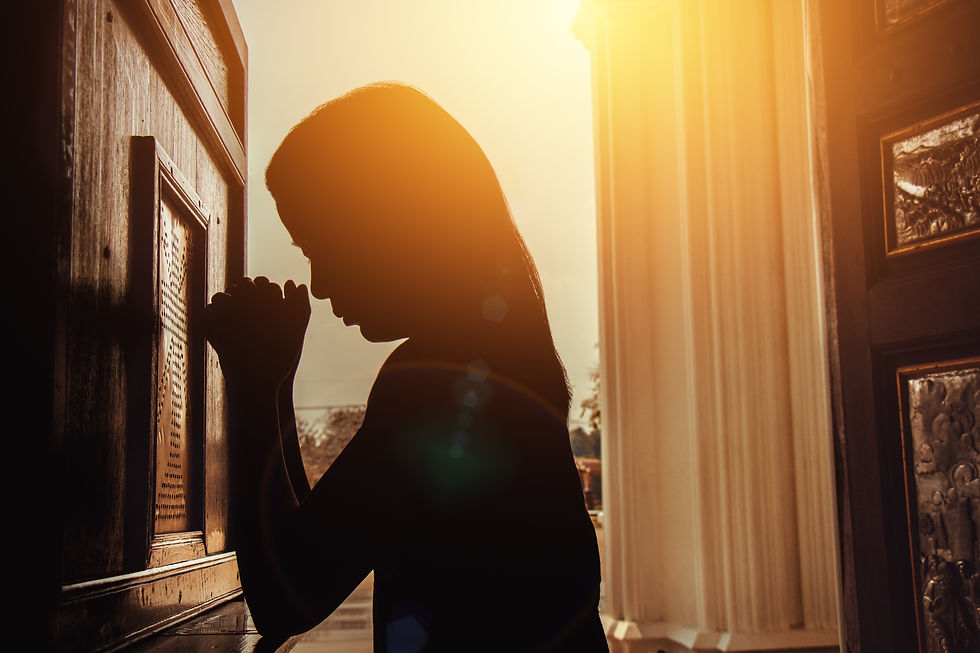I Confess
- claireandthomas
- Jun 9, 2023
- 3 min read
Updated: Aug 5

Bless me Father, for I have sinned. There are many Catholics who have opinions about the Church that are the polar opposite of my opinions, and I find these fellow Catholics intolerable. I have hardened my heart towards them.
American Catholicism has become for me an “either/or” religion. You are either in the camp that believes that women should be ordained or you aren’t. You either believe abortion is the litmus test of true Catholicity or you don’t. You are either pro Pope Francis or you aren’t.

This either/or mindset is dualistic thinking. It assumes a universe where there are only two contrasting and mutually exclusive choices or realities. In our daily lives we often need to think dualistically. We must weigh options and make choices: should I take a job, marry this person, vote for John or for Jane.
But religion, faith, and spirituality are different kettles of fish. Sacred space thrives on non-dualistic thinking. When we think strictly in religious opposites, like either/or, good/evil, right/wrong, or sinner/saint, it is easy to lose sight of the in-betweens.

God, grace, suffering, sexuality, death, and love are not either/or propositions. Nor is incarnation, resurrection, or believing in a God/man.
Recently I have had to face how dualistic my own thinking and attitudes are – less so about faith and theology than about my fellow Catholics whose belief systems contradict my own. “Why don’t they see things my way, the way things really are?”

Now that I see my animosity for what it is, how do I turn this ship around? How do I develop non-dualistic thinking? How do I keep this from being personal? How do I quit seeing members of my Catholic faith as the opposition? How do I find common ground?
When in doubt in Christianity…go back to the source…back to Jesus, who left us with many examples of non-dualistic thinking. One great example is in the Gospel of John (Jn:8). The Pharisees bring a woman to Jesus saying, “Teacher, this woman was caught in the very act of adultery.” They remind Jesus that the law of Moses commands that such a woman be stoned to death. Jesus' immediate reaction is to take a moment.

He doesn’t instinctively react from a place of opposition, as I might; he gives himself, and those around him, a moment of silence. When he does respond it is from, what Fr. Richard Rohr calls, a third way: “Let the one among you who is without sin be the first to throw a stone at her.” He finds a common ground. He reminds those present that all human beings share a tendency to transgress, to offend, to say do wrong. Everyone present becomes aware of their interconnection with the woman in question. One by one, people leave without casting a stone. When they are alone together, Jesus speaks to the woman from a non-dualistic, both/and position. First, he tells the woman that since no one else has judged her, neither will he, then he tells her “go and sin no more.”
This story is one among many in the life and ministry of Jesus that challenges me to adjust my attitude towards Catholics who think quite differently than me. It also provides me with some tips as to how to go about it. Here are four of my takeaways:

1. Don’t view interactions with others as win/lose scenarios. This is dualistic thinking.

2.Take a moment. Breathe. Fight the temptation to respond quickly from a fight or flight emotional position.

3. Don’t set out with the intention of persuading another of my point of view.

4.Common ground will likely be found outside of the dualistic choices presented. Be creative about looking for it elsewhere.
To complete my confession, I choose this prayer from scripture as my penance.








This is so true. Thank you!